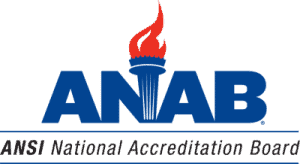Implementing Beneficial Laboratory Practices

Implementing beneficial laboratory practices enhances confidence in the data generated by the laboratory, which helps bolster its reputation. Beneficial laboratory practices also improve productivity and reduce the need for re-work and the occurrence of nonconforming work.
There are many different practices that accredited laboratories must implement, which are important for any laboratory performing measurements and reporting results of those measurements. They include, but are not limited to method verification and validation, personnel competence, ensuring the validity of results, and risk-based thinking. These practices work together to define and refine the technical and quality systems of the laboratory.
Method Verification and Validation
Frist and foremost, laboratories must ensure that the methods they are using are verified and/or validated. Standard methods, such as ASTM, AOAC, or ISO for example, are already validated through the standard development process. Laboratories using standard methods must verify that the laboratory can perform the method and achieve required performance before implementing the method into laboratory practice. Non-standard methods or methods developed by the laboratory must be validated, using a defined validation procedure and specified requirements. This validation ensures that the method achieves intended results by evaluating reproducibility, repeatability, robustness, and other measures.
Verification can be performed using certified reference materials, reference materials, or quality control materials, depending on the method being verified. It should encompass all equipment and personnel used or involved in the process. Verification must be documented and performed prior to performing measurements on customer samples.
Validation must be a planned and controlled activity. Comparison is made between the specified performance characteristics of the method and its actual performance. If method validation proves the method is not fit for the intended purpose, the method must be modified, and validation performed again. Records of validation must include the validation procedure used, specification of requirements, performance characteristics, results obtained, and a statement with regard to the validity of the method and its fitness for intended use.
Personnel Competence
Competent personnel produce reliable results. Laboratories must ensure that personnel are competent to perform the tasks, activities, and methods assigned to them. This can be accomplished in many different ways, such as on-the-job training, group training, reading a procedure, or attending an external training.
Competence requirements must be documented for all functions that could influence the results of the laboratory. This could be laboratory technicians, scientists, sampling personnel, and receiving personnel, for example. Think of what competencies are necessary for each position, then ensure that personnel meet those competencies. Where competencies are not met, provide additional training.
Ensuring Validity of Results
Ensuring the validity of results is important. Valid results are trusted results. Laboratories that produce valid results gain customer trust, which could ultimately expand the market share of the laboratory. Ensuring results are valid requires many different approaches, and a one-size-fits-all attitude will not work. Combining many different means of ensuring the validity of results increases the confidence in the results generated by the laboratory.
Laboratories must have a procedure for monitoring the validity of results. Going beyond the procedure, though, the laboratory must record monitoring data in a way to detect trends because if the data is just gathered and not monitored, the results may not be valid. Laboratories must also participate in some form of interlaboratory comparison to compare their results with the results of other laboratories. This could be formal proficiency testing or interlaboratory comparisons other than proficiency testing.
Once data is gathered and monitored, it must then be analyzed. This analysis assists the laboratory in controlling and improving processes. Any data that is abnormal or does not meet pre-defined criteria must be investigated with actions taken to ensure that nonvalid results are not released to the laboratory’s customers.
Risk-based Thinking
Risk-based thinking should be infused throughout the laboratory’s operations, from impartiality of personnel to nonconforming work, corrective actions, and internal audits. Risk, and opportunities, should be considered at every stage of operations, including method development, verification, and validation, the development of the management system, and the operation and improvement of the management system.
Think of risks to the product, process, laboratory, and customer. Address risks based on their severity and likelihood of occurring. Plan actions to address risks dependent on the impact of the risk to the product, process, laboratory, or customer. Big impact risks require big correction and/or corrective actions. Small impact risks may be tolerated or retained by informed decision.
Regardless of the size of the risk’s impact, it is best practice to document risks and the actions taken to mitigate the risks, even those risks where no action is taken. This allows the laboratory to be aware of the risks, as well as plan for improvements of the laboratory’s operations and management system.
Other Beneficial Laboratory Practices
While this post looked at the benefits of method verification and validation, personnel competence, ensuring the validity of results, and risk-based thinking, many more laboratory practices work to ensure the laboratory is generated trusted, reliable results from the measurements being made. Internal audits, management review, and corrective action are other practices that can greatly benefit the laboratory if implemented effectively. Consider the context of the laboratory, maturity of operations, and specified requirements of the laboratory when determining which practices would be beneficial for the laboratory to implement.






